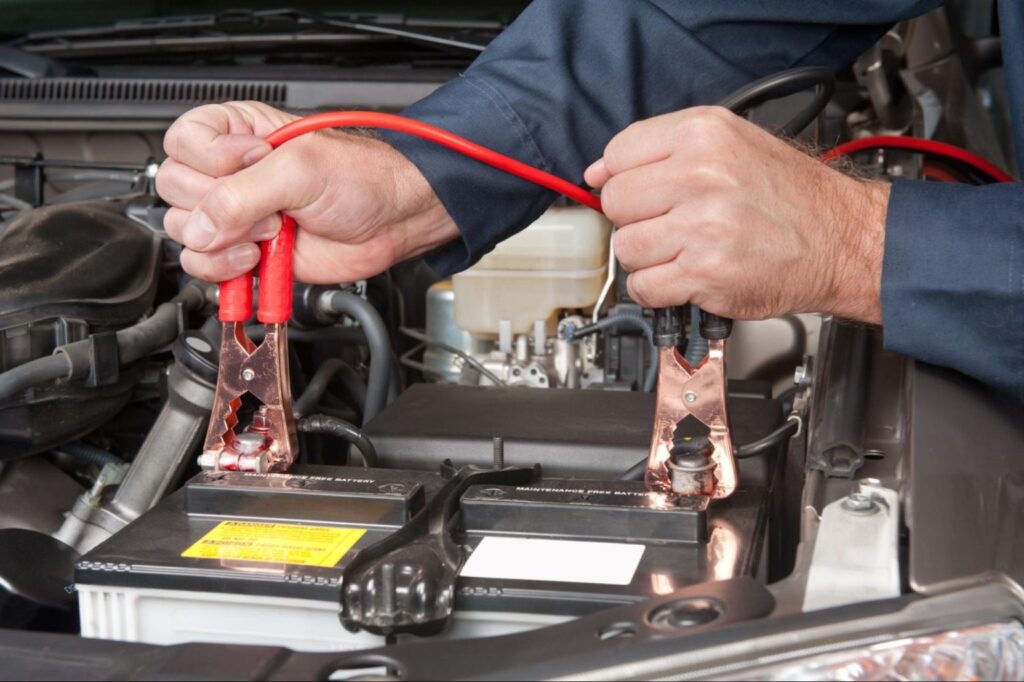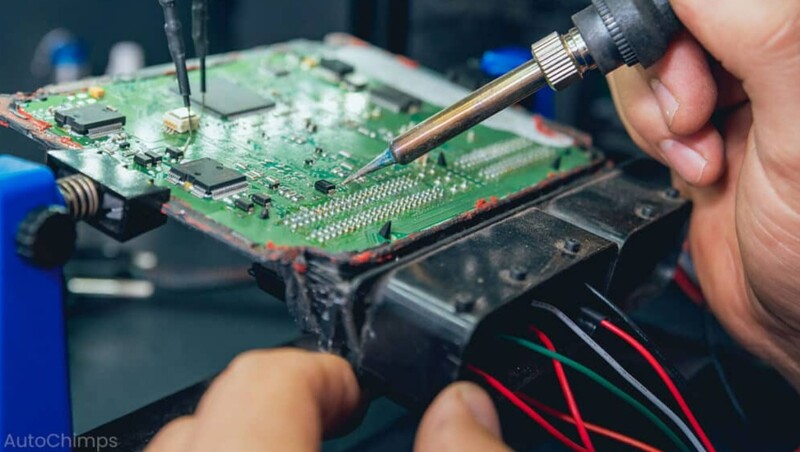Table of Contents
Table of Contents
Understanding the ECU (Electronic Control Unit)
An ECU is what the technicians call an Electronic Control Unit or ECU. It is the brain of your vehicle – a computer that tells your car what to do and when to do it. The ECU is what keeps your engine from jumping out of sync, from smoking while you are driving, and from making that irritating squeal when you jump out of your car in traffic. And if the end malfunctions, well then it is definitely a problem and a reason for you to find out how to reset the ECU.
Step-by-Step ECU Reset Process
How do you reset the ECU? In order to reset the ECU, you need to remove the battery from your car. Then disconnect the electric power connection from the ECU. Then you need to take the screwdriver that comes with your menu and tap into the little plastic slot on the backside of the eye. The plastic flap may pop open and reveal a wire that is coloured blue or black – this is the wire that you will need to unplug and release the power from the vehicle.
Now that you have removed the electric power, release the ground from the positive and negative terminals on the wire. You can do this by either unplugging the wire from the receptacle or by pulling up on the switch to release the positive and negative tension from the wire. It is a good idea to have someone help you do this as not to damage the switch or the receptacle itself. Once you have done this, remove the screws that are holding the switch in place from the vehicle. Now you can remove the switch and recheck the wiring to ensure that it is still connected to the vehicle.
There are actually five wires that make up the ECU sensor switch. These wires are black, red, white, ground, and neutral. You will need to identify which wire goes to which terminal on the ECU. If you cannot figure this out, then you may want to enlist the help of someone with automotive knowledge. Most vehicles have the standard black wire, but there are some newer vehicles that have what is called “hot” wires that go to different terminals. In order to determine what kind of wire is needed for your vehicle, you will need to consult the owner’s manual or look it up online.
Finally, you will want to replace the bad battery. This is also an easy task as long as you have the correct tools. In most cases, you can use the screwdriver to remove the cap on the battery and place the new one in. Following this, you can reconnect the wiring to the car’s ECU. If you followed these steps, you should be able to reset your car’s ignition and run it with a fresh battery.
When Should You Reset Your ECU?
Common Symptoms Indicating ECU Reset is Needed
ECU reset becomes necessary when your vehicle exhibits certain warning signs. Engine performance issues such as rough idling, unexpected stalling, or irregular acceleration patterns often indicate ECU problems. Additionally, if your check engine light remains illuminated after addressing the underlying mechanical issues, an ECU reset may clear stored error codes and restore normal operation.
Post-Repair ECU Reset Requirements
After major engine repairs or component replacements, the ECU may need resetting to adapt to the new parts. This is particularly important when replacing sensors, fuel injectors, or other components that directly communicate with the ECU. The reset allows the system to relearn optimal operating parameters for the updated configuration.
Performance Optimization Through ECU Reset
Over time, the ECU adapts to your driving habits and may develop learned behaviors that aren’t optimal for current conditions. Regular ECU resets can help restore factory-fresh performance characteristics and improve fuel efficiency by clearing outdated adaptive learning data.
Alternative ECU Reset Methods
Battery Disconnection Method

The most common and safest ECU reset method involves simply disconnecting the vehicle’s battery. This approach removes power from all electronic systems, including the ECU, causing it to lose all stored adaptive data and return to factory default settings. Disconnect the negative terminal first, wait 10-15 minutes, then reconnect positive first, followed by negative.
Fuse Removal Technique
Some vehicles allow ECU reset through specific fuse removal. Locate the ECU fuse in your vehicle’s fuse box, remove it for 10-15 minutes, then reinstall. This method is less invasive than battery disconnection and maintains other electronic settings like radio presets and clock time.
OBD-II Scanner Reset
Professional-grade OBD-II scanners can perform ECU resets without disconnecting power. This method allows selective clearing of specific systems while preserving others. Advanced scanners can reset individual modules, clear codes, and perform system relearning procedures.
Safety Precautions and Preparations
Essential Safety Equipment
Before attempting any ECU reset procedure, ensure you have proper safety equipment including insulated gloves, safety glasses, and appropriate tools. Work in a well-ventilated area away from heat sources or open flames, as battery disconnection can produce small sparks.
Pre-Reset Documentation
Record all current vehicle settings including radio presets, seat positions, and climate control preferences, as these may be lost during the reset process. Take note of any existing error codes using an OBD-II scanner before clearing them, as this information may be valuable for future diagnostics.
Vehicle Preparation Steps
Ensure the engine is completely cool before beginning work. Park on level ground with the parking brake engaged. Remove any jewelry or metallic objects that could cause accidental short circuits. Have your vehicle’s manual and any necessary security codes readily available.
What Happens During an ECU Reset
Memory Clearing Process
During an ECU reset, all stored adaptive learning data is erased, including fuel trim adjustments, idle speed corrections, and transmission shift points. The ECU returns to its factory-programmed baseline settings, essentially giving your engine management system a fresh start.
Systems Affected by Reset
Multiple vehicle systems are impacted by ECU reset, including engine management, transmission control, anti-lock braking systems, and emissions controls. Each system will need to relearn optimal operating parameters through normal driving cycles, which may take several hundred miles to complete.
Temporary Performance Changes
Immediately after an ECU reset, you may notice different engine behavior as the system operates on factory default settings. The engine may idle differently, fuel economy might temporarily decrease, and throttle response could feel altered until the relearning process is complete.
Post-Reset Procedures and Expectations
Initial Startup Protocol
After completing the reset, start the engine and allow it to idle for several minutes without touching the accelerator. This allows the ECU to establish new baseline idle parameters. Monitor for any unusual sounds, vibrations, or warning lights during this initial period.
Relearning Drive Cycle
To help the ECU relearn optimal settings quickly, perform a structured drive cycle including city driving, highway cruising, and various load conditions. Avoid aggressive driving during the first 100-200 miles to allow proper adaptation to occur gradually.
Performance Monitoring
Keep track of fuel economy, engine performance, and any unusual behaviors for several weeks after the reset. Most systems complete their relearning within this timeframe, and performance should stabilize at levels equal to or better than pre-reset conditions.
Troubleshooting Common Issues
Reset Didn’t Resolve the Problem
If problems persist after ECU reset, the issue may be hardware-related rather than software-based. Faulty sensors, wiring problems, or mechanical issues require different solutions than ECU reset can provide. Consider professional diagnostic services if symptoms continue.
New Problems After Reset
Occasionally, ECU reset may reveal previously masked issues as the system operates on fresh parameters. These problems were likely present before but compensated for by adaptive learning. Address any new symptoms promptly to prevent potential damage.
Incomplete Reset Symptoms
Signs of incomplete ECU reset include persistent error codes, unchanged engine behavior, or continued performance issues. This may indicate that additional reset procedures are needed or that the ECU has internal faults requiring professional attention.
Professional vs. DIY ECU Reset

When to Seek Professional Help
Complex ECU issues, multiple system failures, or vehicles with sophisticated electronic integration often require professional diagnostic equipment and expertise. Modern vehicles with advanced security systems may need specialized procedures that exceed typical DIY capabilities.
Cost Considerations
Professional ECU reset services typically cost between $100-300, depending on the complexity and additional diagnostic work required. Compare this against the time, tools, and potential risks associated with DIY approaches when making your decision.
DIY Limitations and Risks
While basic ECU reset procedures are relatively simple, incorrect procedures can potentially damage sensitive electronic components or create new problems. Understanding your skill level and having appropriate tools is essential for successful DIY ECU reset.
Maintenance Tips for ECU Longevity
Regular System Updates
Keep your vehicle’s ECU software updated when manufacturer updates are available. These updates often include improved algorithms, bug fixes, and enhanced performance optimization that can extend ECU life and improve reliability.
Preventive Care Measures
Protect your ECU through regular maintenance of related systems including air filters, fuel filters, and sensors. Clean electrical connections periodically and address any warning lights promptly to prevent minor issues from becoming major ECU problems.
Environmental Protection
Shield your ECU from extreme temperatures, moisture, and electrical interference when possible. Park in covered areas when available and address any water intrusion issues immediately to prevent corrosion or electrical damage to ECU components.
Understanding ECU Technology Evolution
Modern ECU Capabilities
Today’s ECUs are significantly more sophisticated than earlier generations, managing everything from fuel injection timing to emissions control and even connectivity features. Understanding your specific ECU’s capabilities helps determine appropriate reset procedures and expectations.
Future ECU Developments
Emerging technologies like artificial intelligence and machine learning are being integrated into newer ECU systems, making them more adaptive and self-correcting. These advances may reduce the need for manual resets while providing enhanced performance optimization.
Compatibility Considerations
When working with ECU reset procedures, always verify compatibility with your specific vehicle year, make, and model. Generic procedures may not apply to all vehicles, and following incorrect procedures can potentially cause system damage or void warranties.


